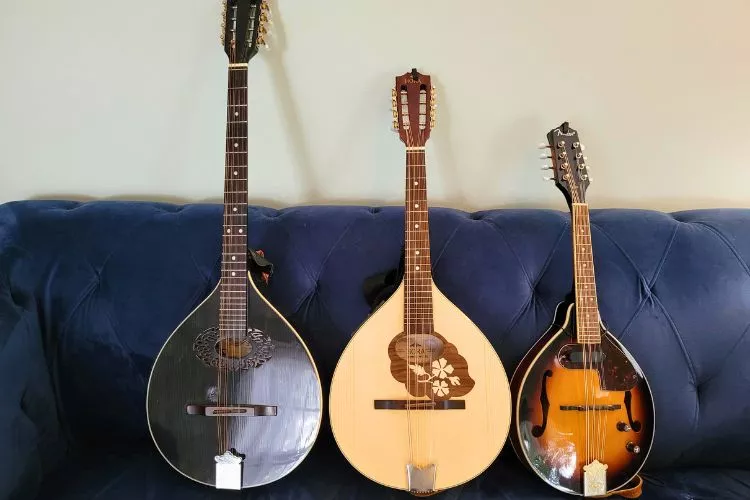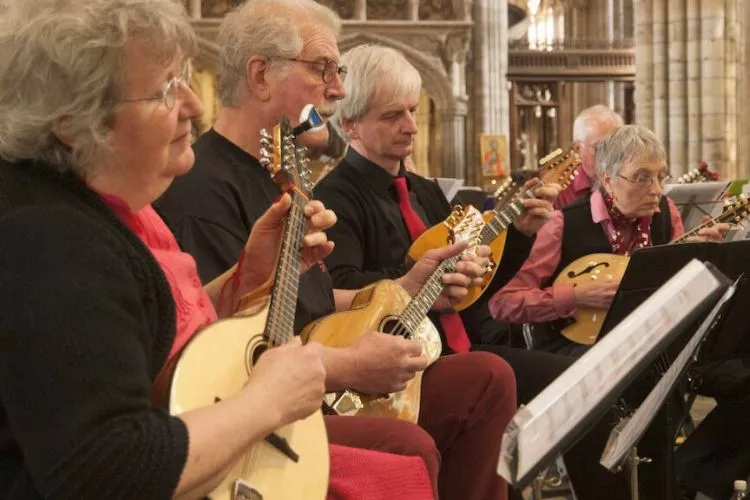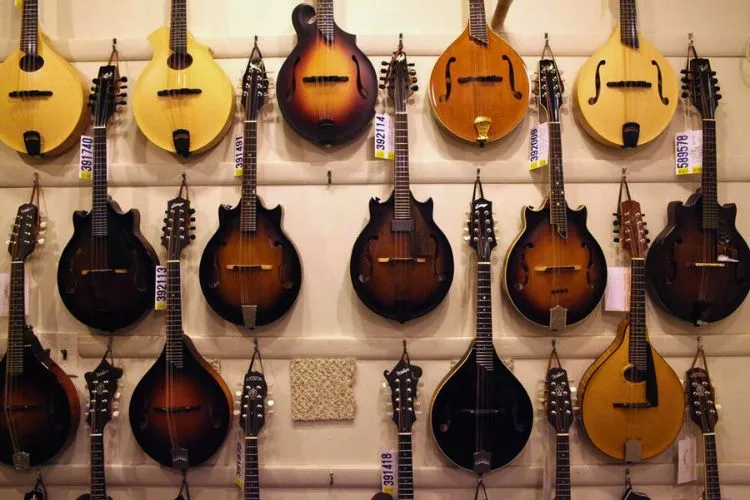Have you ever glanced at a mandolin and pondered on where did the mandolin originate? Travel with us as we plunge into the fascinating narrative of its genesis. The mandolin is instrumental in various music genres with its peculiar design and harmonious notes.

But where did this unique instrument originate—whose crafty hands first forged the strings? In this informative piece, we chronicle the adventurous journey of the mandolin from its inception to its cherished place in contemporary music. Get ready for a musical examination of history.
Contents
🎶Where did the mandolin originate?
The mandolin originated in Southern Italy in the 18th century, evolving from the mandora, a stringed instrument reminiscent of the lute popular during medieval times. The instrument gained widespread acceptance among European musicians and composers during the Baroque era.
Its popularity exploded in the late 19th century when Neapolitan mandolinists emigrated to the United States and introduced the instrument to the American music scene. Today, the mandolin features prominently across various folk and popular music genres.
🎶How did the mandolin originate?
The history of the mandolin traces back to the lute family of instruments, which were prevalent in Europe during the medieval and Renaissance periods. The mandola, a variant of the lute, came into existence in Italy around the 15th and 16th centuries.

The mandolin originated as a descendant of the mandola in the 18th century in Naples, Southern Italy. The ‘Neapolitan mandolin’ was crafted with a rounded back, similar to a lute, and was strung with gut strings. It was designed to have eight strings in four pairs called “courses, ” usually played with a plectrum.
This instrument gained popularity first in Naples and then quickly spread throughout Europe and beyond. As musicians and craftspeople continued to refine and experiment with the design over centuries, the mandolin adapted to various musical styles and cultural settings.
🎶Mandolin History timeline: What is the story of mandolin?

- 15th-16th Centuries: The mandolin traces its roots back to the mandola, a lute-style instrument popular in Italy.
- 18th Century: The mandolin, as we recognize it today, materializes in Naples, Italy. Its distinct design, featuring a rounded back and gut strings, is called the ‘Neapolitan mandolin.
- Mid-18th Century: The mandolin gained considerable popularity in Europe, becoming a favorite among composers and musicians of the Baroque era.
- Late 19th Century: Neapolitan immigrants introduced the mandolin to the United States, sparking an explosion of popularity. The American music scene embraces the mandolin, facilitating its incorporation into various music styles.
- Early 20th Century: The mandolin’s design continues to evolve with the ‘Archtop’ and ‘Flatback’ emerging, each suited to different music styles.
- Mid-20th Century: With the rise of Bluegrass music, the mandolin, especially the ‘F-style’ version created by Gibson, significantly gained popularity. Artists like Bill Monroe reinforced the mandolin’s status in popular music.
- Late 20th Century – Present: The mandolin is prominent in various music genres. Contemporary artists such as Chris Thile and Avi Avital continue to popularize and expand the instrument’s versatility, ensuring its enduring legacy.
🎶History of mandolin in America
- Late 19th Century: The mandolin’s voyage to America commences when Neapolitan immigrants introduce the instrument to the nation. Entwined with their cultural heritage, these immigrants promoted the mandolin by performing traditional Italian music, which gained notoriety in the United States.
- Late 19th-Early 20th Century: Known as the “Mandolin Craze,” this period marks the rapid rise in popularity and adoption of the mandolin in the United States. Mandolin ensembles started to appear nationwide, entertaining various audiences^[2^]. Orville Gibson, founder of the Gibson company, played a crucial role in modernizing the mandolin’s design by developing the ‘Archtop’ and later the ‘F-style’ mandolins.
- 1920s-1930s: Mandolin ensembles diversified, incorporating jazz, blues, and classical music into their performances, reflecting the diversification of American music culture.
- 1940s-1950s: The mandolin becomes a vital component of the emerging ‘Bluegrass’ genre. Bill Monroe, the “Father of Bluegrass,” popularized the Gibson F-style mandolin, revealing its adaptability to faster-paced, rhythmic playing and soulful solos. Mandolin also gained prominence in country and folk music.
- 1960s-1970s: David Grisman, a pivotal musician, re-imagines the mandolin’s role by forging a unique blend of Bluegrass, folk, and jazz, known as “Dawg” music. The mandolin remains relevant as it finds its place in various music styles.
- 1980s-Present: The American mandolin sees a resurgence in interest, with artists such as Chris Thile, Sierra Hull, and Sam Bush pushing the instrument’s boundaries. The instrument retains its popularity in Bluegrass and country while simultaneously exploring contemporary pop, rock, indie, and chamber music.
The mandolin’s journey in America reflects a tale of embracing diversity, showcasing how a traditional instrument can adapt and flourish in a dynamic cultural landscape.
If you are interested in learning mandolin: Best mandolin for a beginners | Is Mandolin Hard To Learn?
Conclusion:
From its humble origins in 18th century Naples, Italy, to the thriving stages of Europe and America, the mandolin has strummed an enduring melody across centuries and cultures. Rooted in the lute family, it has found a unique voice that reverberates in symphony halls, concert arenas, and cozy hearths.
Its storied journey is a testament to the instrument’s ability to adapt and captivate, breathing life into diverse musical genres. Regardless of where it is played, the mandolin carries an echo of its Italian descent, a testament to its stirring and melodious past. That would be the simple answer to the question “where did the mandolin originate”.
